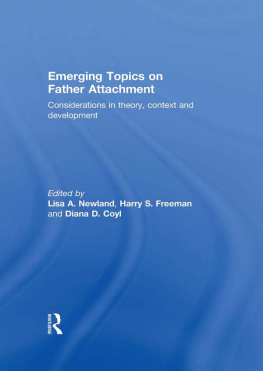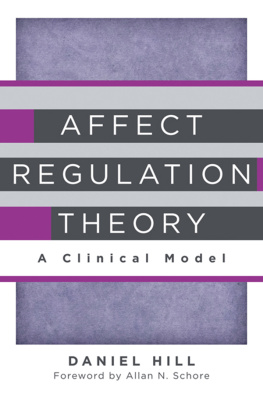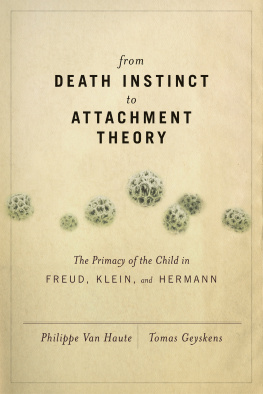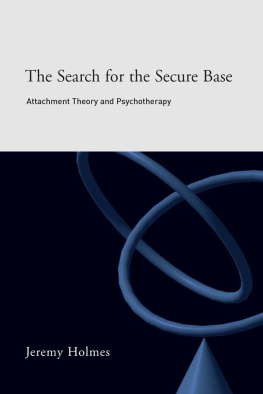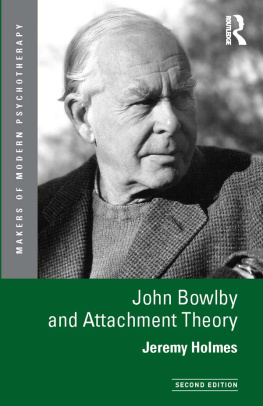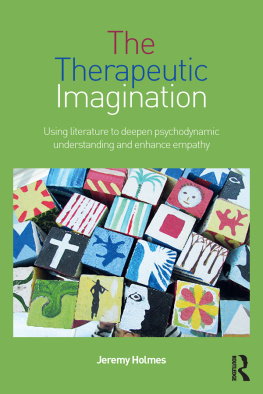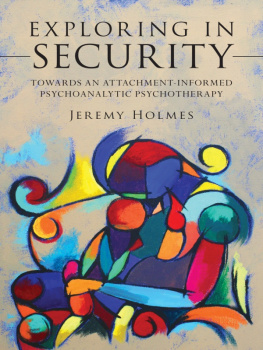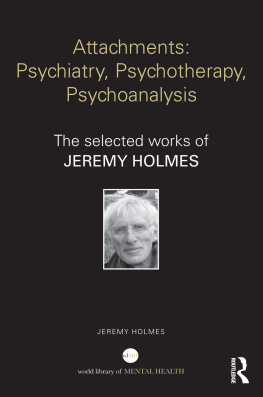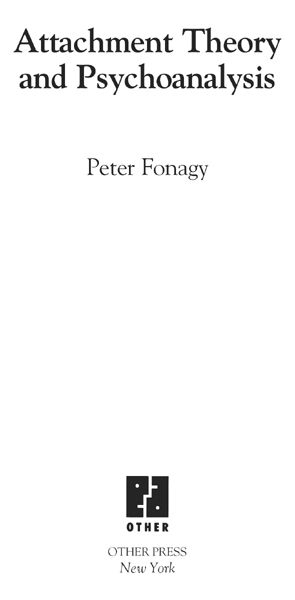Contents
Preamble
There is bad blood between psychoanalysis and attachment theory. As with many family feuds, it is hard to identify where the problem began.
In the early 1960s, a number of major psychoanalytic figures turned on John Bowlby following the publication of his article in the Psychoanalytic Study of the Child (Bowlby 1960). Attachment theory was criticized as mechanistic, nondynamic, and explicated according to thorough misunderstandings of psychoanalytic theory (A. Freud 1960, Schur 1960, Spitz 1960). Opposition to his views provided one small area of common ground for the followers of Anna Freud and Melanie Klein (Grosskruth 1986), and for the next decades Bowlby was a relatively isolated figure in psychoanalysis. These critiques, which were added to at fairly regular intervals by major figures such as Engel (1971), Rochlin (1971), Roiphe (1976), and Hanley (1978), raise a variety of issues but at root they boil down to relatively few simple disagreements. Bowlby is seen as having renounced drives, the Oedipus, unconscious processes, particularly unconscious fantasy, complex internalized motivational and conflict-resolving systems. He is further seen as having discarded the richness of the array of human emotions, be these affects experienced by the ego and involving socialization or sources of pleasure rooted in the infants physical body. Attachment theory is seen as ignoring biological vulnerabilities other than those rooted in the caregivers behavior and as reducing etiological considerations to a single variable: that of physical separation. Bowlby is accused of failing to consider the impact of the developmental state of the ego on the childs ability to make attachments and react to loss. He is also accused of ignoring negative attachment related to the fear of the mother and trauma other than physical separation. Bowlby is seen to be a reductionist in his emphasis on evolutionary considerations at the expense of full recognition of complex symbolic functioning. And that is just the version of the psychoanalytic assessment that is suitable for public consumption. Much worse was said in private. Bowlby treats humans as though they were animals (Grosskruth 1987, p. 406). Analysts make dismissive comments about his work yet feel no obligation to read it (Ellingen 1997, cited in Marrone 1998). Although undoubtedly amongst the top ten best known British psychoanalysts, and probably one of the most cited internationally, his work is still not compulsory reading at the British Institute. Nor is the feud showing any real sign of dying down. As recently as 1992, Lilleskov (1992) wrote: Bowlbys disregard of drive theory may have made observations of behavior easier but has reduced the explanatory power of these observations (p. 128).
Rather than engaging the historic psychoanalytic figures opposed to Bowlby in debate and taking issue with the crassness of their critiques and the profound misapprehensions of attachment theory they often imply, we should briefly look at Bowlbys presentation of psychoanalysis. This, I am sad to say, is at times unworthy of his genius. In Chapter 22 of his second volume (Bowlby 1973), entitled Pathways for the Growth of Personality, Bowlby compares two alternative theoretical models to two types of railway systems. The psychoanalytic model of personality development is regarded as a single-track rail along which stops can occur. Adult pathological states are considered as due to fixations at, or regressions to, early phases of normal development. Bowlbys alternative model, derived from the biologist C. H. Waddington (1966), includes a range of alternative developmental pathways, a single main route that then branches out into a range of distinct tracks. While Bowlbys point is clear, it is also disingenuous. He was very familiar with the work of Anna Freud, Eric Erikson, and others, all of whom posited similar multi-track developmental networks. Bowlby seems guilty of combating a psychoanalytic straw man. Similarly, in his 1958 paper Bowlby is at pains to demonstrate that psychoanalysts have been trying in vain to free themselves from what he calls secondary drive theory. The primary drive, being based on oral and other physical needs, creates a secondary drive for bonding. By contrast, he places social bonds in the position of a primary biological given. Again, Freud and Burlingham in 1944 already recognized the childs instinctual need to be attached to the mother. Even earlier, the Hungarian psychoanalyst Imre Hermann (1923) proposed a primary instinct to cling to the caregiver based on primate observations not dissimilar to Bowlbys use of the work of Harlow.
Bowlby (1980c) maintained this blinkered attitude to the end. In his epilogue to the collection of papers edited by Parkes and Stevenson-Hinde, he restated his disappointment with psychoanalysis: Psychoanalysis gave weight to the internal workings of the human mind and recognized the special status of intimate human relationships, but its metapsychology, already obsolescent, was a handicap, while its fixation on a single, retrospective research method gave no means of resolving differences of opinion (p. 310). Bowlby here appears to rule out the relevance of psychoanalytic observation on a priori grounds without wishing to explore the ideas in detail. In the same section, he comments that different investigative methods have intrinsic strengths and vulnerabilities and can be fruitfully used in combination: the strength of one may make good at least some of the weaknesses of the other (p. 312). But by this time psychoanalysis has disappeared from his epistemic horizon. In 1988 he characterizes the standard psychoanalytic view as follows: Anyone who places emphasis on what a childs real experience may have been was regarded as pitifully nave. Almost by definition it was assumed that anyone interested in the external world could not be interested in the internal world, indeed was almost certainly running away from it (Bowlby 1988, pp. 4344).
It is interesting to observe, that unlike most of his creative psychoanalytic contemporaries Bowlbys ideas did not lead to a new psychoanalytic school. Had they done so there would be no call for this volume. Rather they led to a line of empirical investigation that served to distance attachment theory further and further from psychoanalysis, separated not just by a novel orientation to understanding clinical cases but also by an incompatible epistemology. Bowlbys interest in observation, research, and the representation of the real rather than the reality of the representation ruled him out of bounds for all but the most unorthodox of psychoanalysts for most of the second half of his life. As Jeremy Holmes (1995) so poignantly observed: Bowlbys theory and its tremendous ramifications for clinical work were for decades virtually airbrushed out of the psychoanalytic recordrather like some dissident in Stalinist times (p. 20).
Thus, just as psychoanalysts have consistently and somewhat tendentiously misread attachment theory and found it wanting in richness and explanatory power, so Bowlby consistently focused on the weakest facets of the psychoanalytic corpus, almost as if he wished to forestall a mutually corrective interrelationship. Consequently, Bowlbys followers came from the world of empirical science and laboratory observation. There are exceptions to this trend. Bretherton (1987) presented a thoughtful comparative review of attachment theory, separation-individuation theory, and the theory of infantmother relatedness presented by Stern. There are some other good examples of integrative attempts, including those of Allen (1995, 2000), Eagle (1995, 1997), Holmes (1993b, 1997), and Marrone (1998). We shall review some of these authors briefly after we have considered potential points of contact between attachment theory and the classical psychoanalytic ideas.


